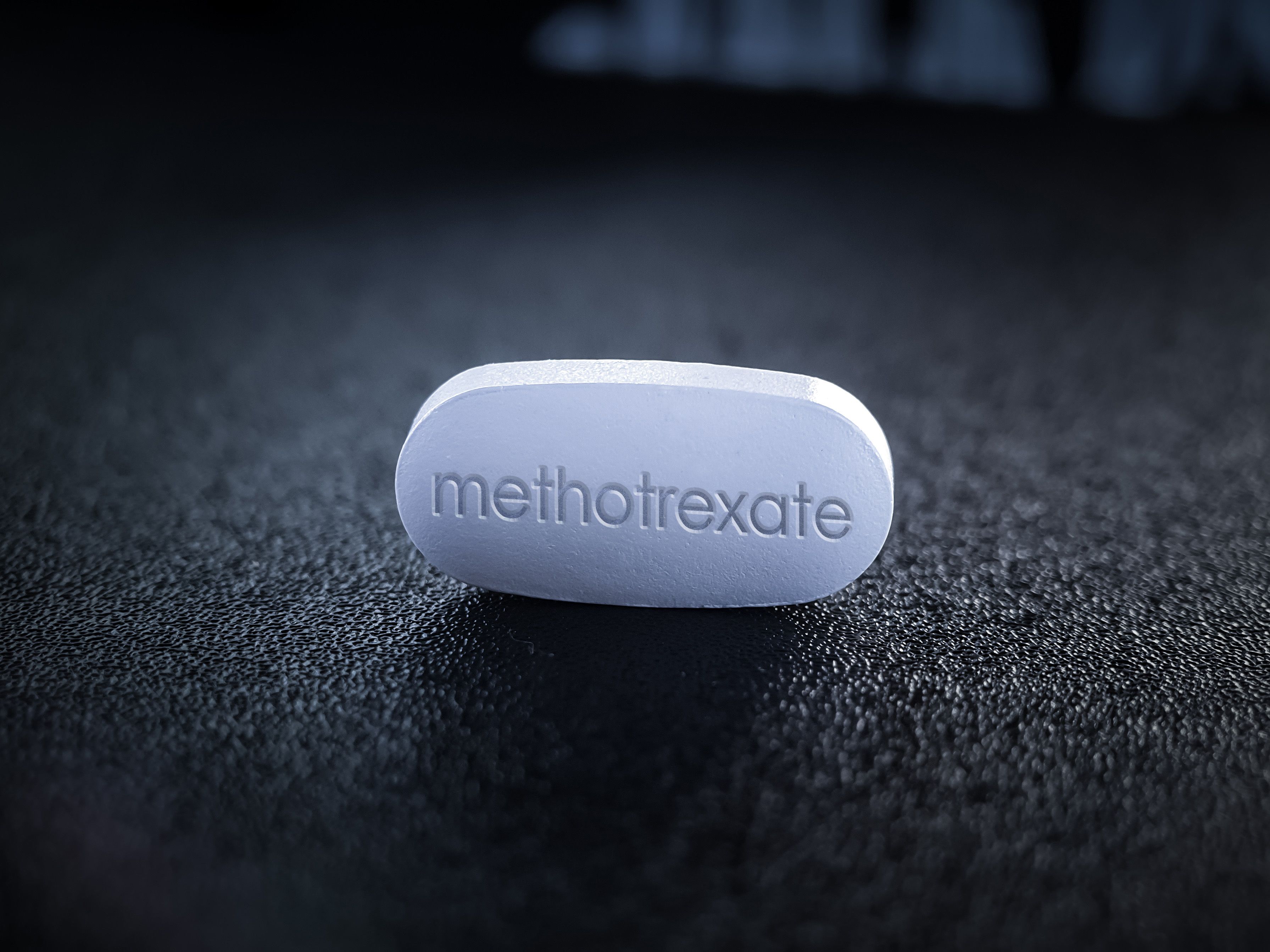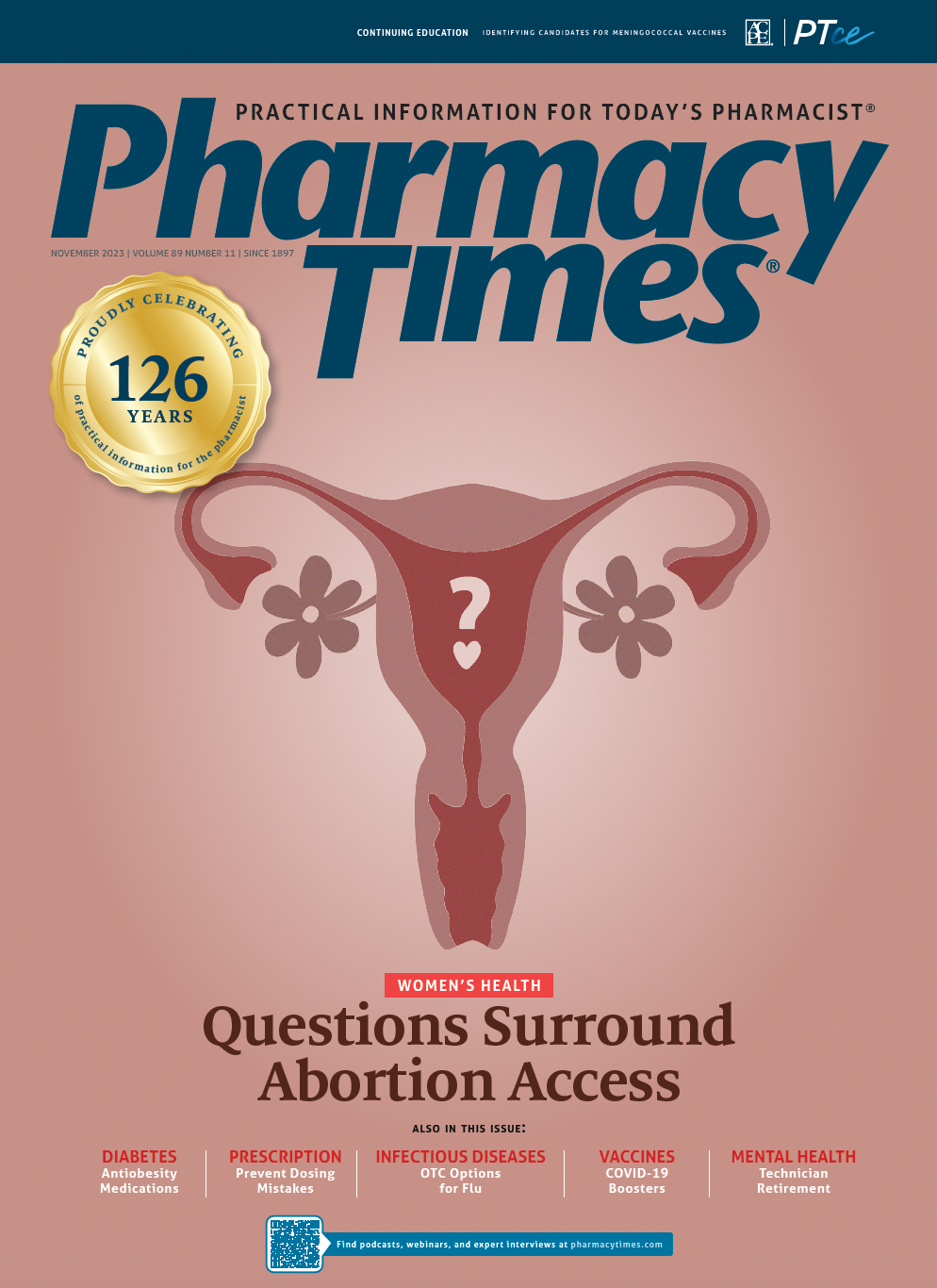Publication
Article
Pharmacy Times
Implement Strategies Now to Prevent Patient Death From Accidental Daily Methotrexate Dosing
Author(s):
Specifying a day of the week to take the medication could help avoid inadvertent daily dosing
Methotrexate is a folic acid antagonist that was originally approved to manage a variety of cancers and nononcologic conditions, including psoriasis and rheumatoid arthritis (RA). When used for oncologic indications, methotrexate is administered in cyclical frequencies and in variable doses based on body surface area and the type of cancer being managed. However, for most nononcologic indications, a low dose of methotrexate is administered weekly. For example, 7.5 mg per week is administered when initiating treatment for RA.
Image credit: Soni's | stock.adobe.com

Accidental daily dosing of oral methotrexate has occurred all too frequently. This type of frequency error has originated in all stages of the medication use process, from prescribing to self-administration. These errors have resulted in serious methotrexate overdoses that led to vomiting, mouth sores, stomatitis, serious skin lesions, liver failure, renal failure, myelosuppression, gastrointestinal bleeding, life-threatening pulmonary symptoms, and death.
THE LATEST INCIDENT
A recently reported patient death is a stark reminder of the harm that can occur. A patient had been admitted to a rehabilitation facility following a fall at home. It appears that a prescription for 20 mg methotrexate daily was sent to the pharmacy instead of a prescription for 20 mg methotrexate weekly. According to media reports, the prescriber approved the order and the pharmacy dispensing system allowed the pharmacist to bypass a highdose alert. As a result, the patient received 20 mg of methotrexate daily for a week (a total of 100 mg). The patient became ill and died about a week later. The prescriber and the pharmacist face second-degree manslaughter charges and the prescriber faces a charge of neglect.1
RECOMMENDATIONS
The Institute for Safe Medication Practices (ISMP) has identified methotrexate as a high-alert medication in community, long-term care, and hospital settings, even when used for nononcologic purposes such as RA. As with all high-alert medications, there is a heightened risk of significant patient harm when this drug is used in error.
Most of these incorrect frequency errors with methotrexate can be prevented by implementing known risk-reduction strategies. Technology vendors, regulators, standards-setting organizations, health care organizations, and practitioners should make the following system improvements outlined in Best Practice 3 in the ISMP Medication Safety Best Practices for Community Pharmacy2:
- Use a default weekly dosage regimen for oral methotrexate when medication orders are entered in electronic systems.
- Require verification and entry of an appropriate oncologic indication in order entry systems for daily orders.
- Require a hard-stop verification of an appropriate oncologic indication for all daily oral methotrexate orders.
- For systems that cannot provide a hard stop, clarify all daily orders for methotrexate if the patient does not have a documented appropriate oncologic diagnosis.
- Work with software vendors and information technology personnel to ensure that this hard stop is available. Software vendors need to ensure that their order entry systems are capable of this hard stop as an important patient safety component of their systems.
- Create a forcing function (eg, an electronic stop in the sales register that requires intervention and acknowledgement by a pharmacist) to ensure that every oral methotrexate prescription is reviewed with the patient or caretaker when a prescription is presented or refills are processed.
- Provide specific patient and/or family education for all oral methotrexate prescriptions.
- Specifically ask the patient which day of the week they plan to take this medication.
- Provide clear written instructions in addition to clear verbal instructions for oral methotrexate that specifically review the dosing schedule, emphasize the danger with taking extra doses, and emphasize that the medication should not be taken “as needed” for symptom control.
- Require the patient to repeat back the instructions to validate that the patient understands the dosing schedule and toxicities of the medication if taken more frequently than prescribed.
- Provide all patients with a copy or link to the free ISMP high-alert medication consumer leaflet on oral methotrexate available at www.ismp.org/ext/221.
Health care practitioners should also consider other important risk-reduction strategies. When prescribing, consider specifying a day of the week in the directions to reduce the risk that a patient will receive instructions for daily use. If possible, avoid Monday because it may be misread as “morning.” In addition, include a specific clinical purpose (eg, RA, psoriasis) within the prescription and limit the prescription quantity to a 4-week (28-day) supply.
When possible, provide patients and/or caregivers with a visual calendar to clarify the weekly dosing schedule. Educate patients, family members, and/or caregivers about the key symptoms of methotrexate toxicity, which include nausea, vomiting, diarrhea, pulmonary symptoms, stomatitis, ulceration or erosion of the gastrointestinal system, and cutaneous ulcerations.3 Patients and caretakers should also be told where to go to report any symptoms. If a methotrexate dosing error is discovered, ensure the patient receives immediate medical attention.
ABOUT THE AUTHOR
Michael J. Gaunt, PharmD, is a senior director of error reporting programs and editor at the Institute for Safe Medication Practices (ISMP) in Horsham, Pennsylvania. He also serves as the editor of the monthly ISMP Medication Safety Alert! Community/Ambulatory Care newsletter.
REFERENCES
- Twenter P. Oklahoma physician, pharmacist charged with manslaughter plead not guilty. Becker’s Hospital Review. August 17, 2023. Accessed October 17, 2023. https://www.beckershospitalreview.com/legal-regulatoryissues/oklahoma-physician-pharmacist-charged-withmanslaughter-plead-not-guilty.html
- Targeted medication safety best practices for community pharmacy. Institute for Safe Medication Practices. April 3, 2023. Accessed October 17, 2023. https://www.ismp.org/guidelines/best-practices-community-pharmacy
- Bidaki R, Kian M, Owliaey H, Babaei Zarch M, Feysal M. Accidental chronic poisoning with methotrexate; report of twocases. Emerg (Tehran). 2017;5(1):e67.































